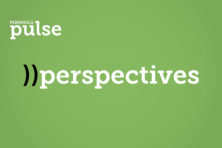Pulse of Philanthropy: A Dangerous Concentration of Risk
- Share
- Tweet
- Pin
- Share

by BRET BICOY, President and CEO, Door County Community Foundation
As civic participation of all kinds continues to decline, so has the number of people who make contributions to charity. Over the past decade, the total number of folks who give has decreased by an incredible 19%. And according to the “Giving USA 2023: Annual Report on Philanthropy for the Year 2022” from Indiana University’s Lilly Family School of Philanthropy, that trend is accelerating as 10% fewer people donated to charity last year alone.
To overcome this troubling decline, many professional fundraisers have adopted the strategy of “donors down, dollars up.” That means that rather than trying to swim against the societal currents of diminishing civic engagement, many professional fundraisers have accepted this situation as inevitable and adopted a strategy to overcome the decrease in total donors by nurturing greater relationships with their wealthiest friends.
At the very highest level, last year just six people accounted for 5% of all charitable giving. Let me repeat that. There are more than 330 million Americans, but just six people were responsible for 5% of all donations made last year. It’s also the second year in a row when this has occurred.
If the only measure of a fundraising plan’s success were the amount of money raised, then this “donors down, dollars up” strategy has actually worked. During the same decade when the number of people making donations has decreased precipitously, the total amount given has increased modestly.
There are many who argue that this shift toward wealthy donors and away from broad-based fundraising weakens a charity’s ties with its community and ultimately leads to a disconnect between the organization and the people it aims to serve. I’ll explore that argument in a future column, but even from a purely financial perspective, the “Giving USA 2023” report reminds us of the economic downsides of this growing reliance on fewer wealthy donors.
To paraphrase F. Scott Fitzgerald, let me tell you about the very rich. They are different from you and me. The very rich give from their assets rather than from their earned income because what they have is typically far greater than what they earn in a single year.
Consider that 2022 was a disastrous period for the stock market. The S&P 500 dropped a shocking 19.4%. Although that certainly made for some ugly statements for my retirement portfolio, it didn’t really have any direct impact on the income that my wife and I earned from our full-time jobs. In fact, we both received modest raises last year. Because the source of our charitable giving is our earned income, we were actually able to give more to charity in 2022 than ever before.
However, for wealthy families whose earned income is only a small part of their total assets, the decline in their investment portfolios in 2022 was painful. Not surprisingly, when you see your personal wealth shrink significantly, you tend to hold on more tightly to what you have. That’s why giving in wealthy households tends to correlate with large swings in the stock market. Consequently, giving by individuals declined in 2022 by a whopping 13.4% when adjusted for inflation.
Some professional fundraisers refer to down years in the stock market as “donors down, dollars down” as their organizations get hit from all sides. This is the price the charitable sector is paying for its shortsighted reliance on fewer wealthy donors.
No smart financial adviser would put your entire investment portfolio in just a handful of stocks. No smart businessperson would build a strategy around selling to only a handful of customers. That kind of concentration of risk is foolish. Yet for the past decade, the “smart” fundraisers with quotas to fill have been deliberately focusing their efforts on just their wealthiest donors.
Of course, I’m not the first person to be bothered by this trend. Lots of nonprofit CEOs have recognized that relying on donors whose levels of giving swing with the volatility of the stock market is a shortsighted business strategy. Consequently, smart charities have worked to grow their donor bases.
Yet when we sailed into rough economic waters like we experienced in 2022, many in the charitable world abandoned their expansion efforts and instead doubled down on the “donors down, dollars up” strategy. Thus, not surprisingly, total charitable contributions from new donors that were gained in 2021 fell by a calamitous 26% in 2022.
Obviously, it makes sense for a charity to continue to nurture its relationships with its wealthiest donors, but smart nonprofit organizations recognize that doing so to the exclusion of moderate donors creates a dangerous concentration of risk.
Contact Bret Bicoy at [email protected].

